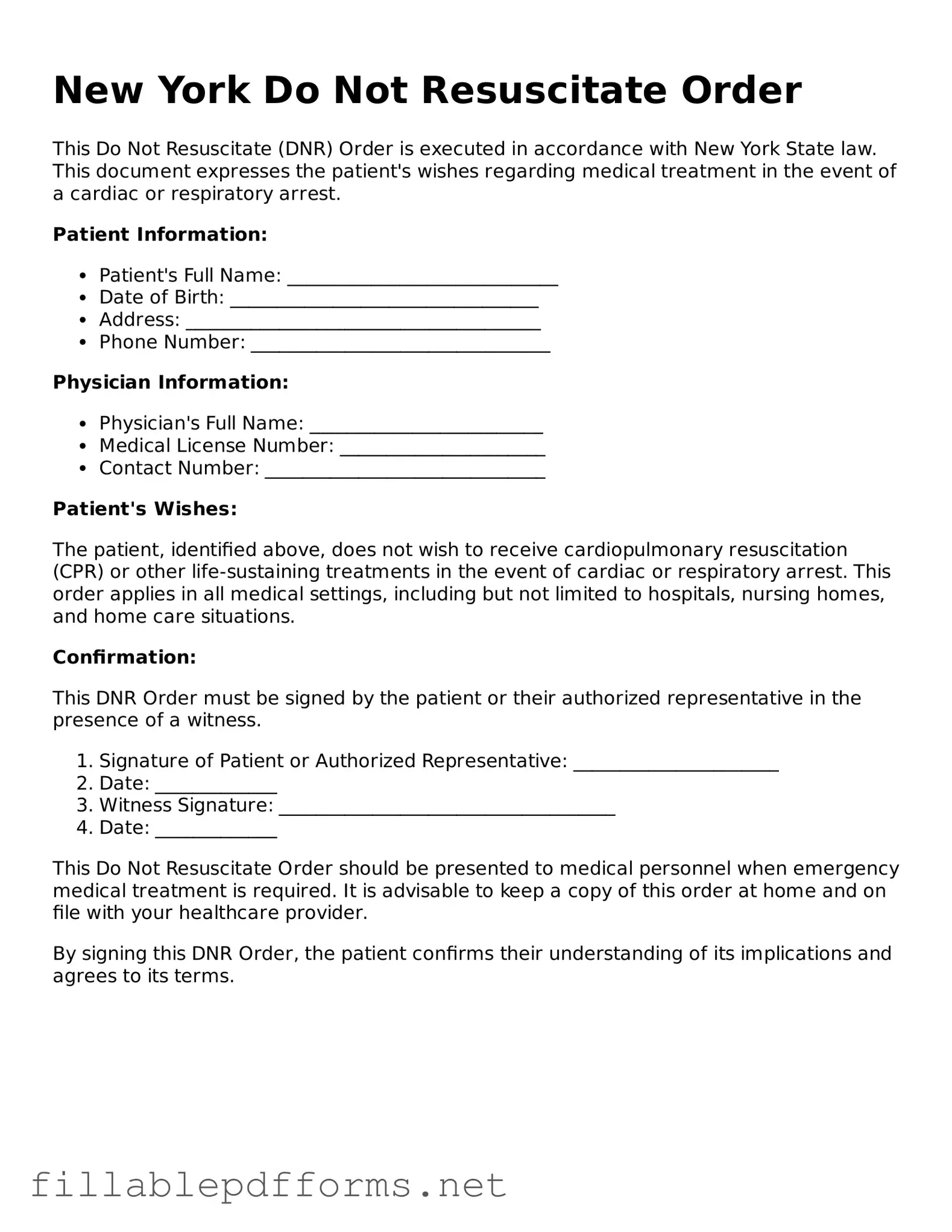Attorney-Verified Do Not Resuscitate Order Form for New York State
A Do Not Resuscitate (DNR) Order is a legal document that allows individuals to refuse cardiopulmonary resuscitation (CPR) in the event of cardiac arrest. In New York, this form is crucial for those who wish to ensure their end-of-life preferences are respected. Understanding how to properly complete and implement this form can provide peace of mind for both patients and their families.
Launch Editor Here
